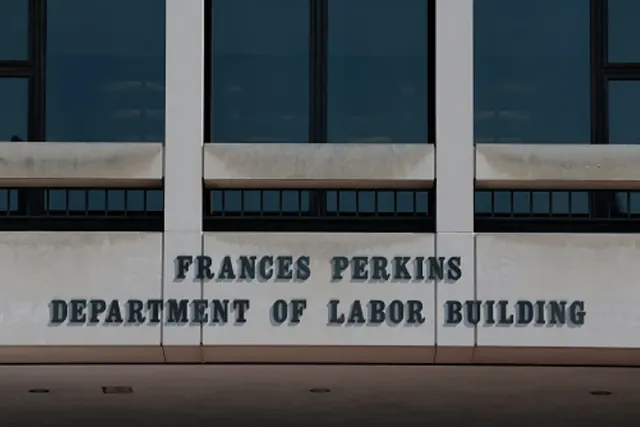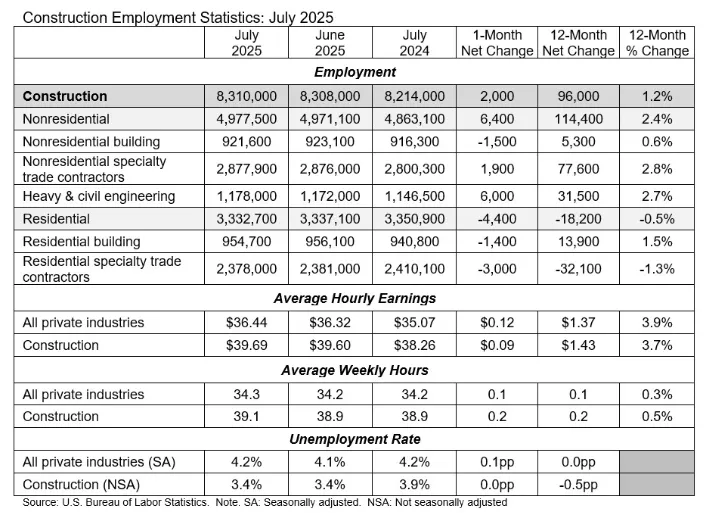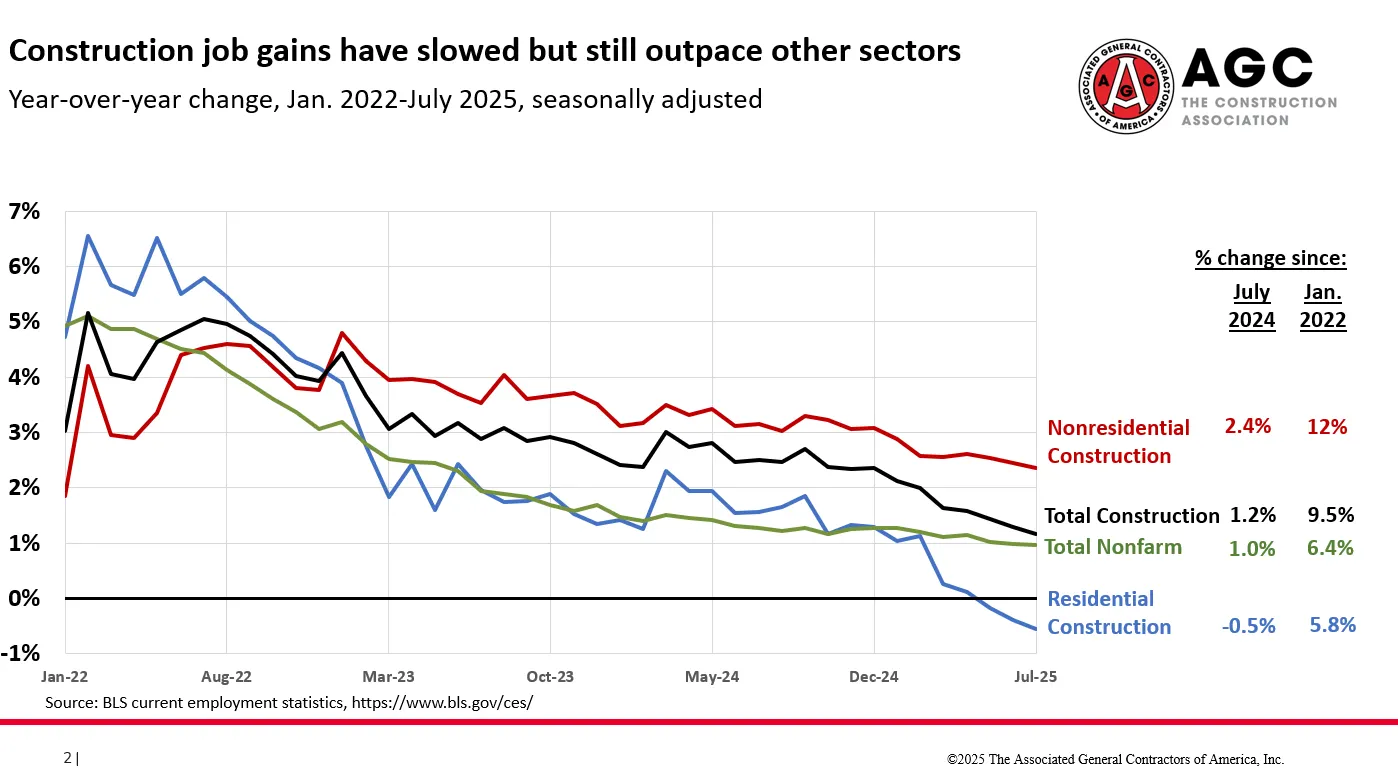
WASHINGTON, D.C. — The recent firing of Bureau of Labor Statistics (BLS) Commissioner Erika McEntarfer by President Donald Trump has sent shockwaves through the economic and construction industries, sparking debate over the reliability of national jobs data. At the heart of the controversy is the BLS’s standard practice of revising monthly employment figures — a routine adjustment that nonetheless prompted political backlash after the agency sharply lowered June’s construction job growth figures.

Trump dismissed McEntarfer following the release of the Aug. 1 federal jobs report, which cut May and June employment estimates. The revisions saw June’s construction job gains slashed by a staggering 90% — from 147,000 to just 14,000.
Despite the political drama, industry economists have expressed continued confidence in the data. They emphasize that revisions are a normal, statistically necessary step to reflect more complete employer reporting and corrections to earlier estimates.
“It is extremely unfortunate that the president removed a distinguished career economist and cast aspersions on the report,” said Ken Simonson, chief economist for the Associated General Contractors of America. “It may backfire on him in that a subsequent report with more positive numbers will now be regarded as having been manipulated to please him.”
Simonson, who served from 2009 to 2015 on the BLS Data Users Advisory Committee, warned that undermining the agency’s leadership could erode public trust in economic reporting — trust that takes decades to build but can be quickly damaged.
Anirban Basu, chief economist of Associated Builders and Contractors, noted that in the year prior to June 2025, monthly revisions between the first and second estimates typically averaged around 15,000 jobs. The June 2025 revision, however, was far more dramatic, signaling significant shifts in construction activity.
The August report also revealed July’s construction employment changes. Nonresidential building jobs grew by 6,400 from June and were up 114,000 year-over-year. While that’s technically growth, Basu described the pace as “lackluster,” with industrywide employment rising just 1.2% over the past year.

“The volatility in official economic statistics merely adds to the most salient aspect of the economy today: pervasive uncertainty,” Basu told Construction Dive.
“In short, unless contractors are engaged in ongoing public works, data center and/or related power construction, the near-term outlook is not especially positive.”
Simonson added that residential construction continues to shed jobs amid “extreme weakness” in both multifamily and single-family housing sectors.
Monthly employment data is more than just a political talking point — it drives real-world business decisions in the construction industry. For contractors, fluctuations in the numbers can influence whether they invest in new equipment, expand crews, or hold back on spending.
High interest rates, a slowing economy, and caution from developers have all contributed to reduced hiring, especially in residential building. While public infrastructure projects and technology-sector construction (such as data centers) remain bright spots, other sectors are bracing for stagnation.
Basu warned that a slowdown could push firms to become more conservative:
“That means perhaps spending less aggressively on equipment and adding personnel. It may also mean releasing underperformers from employment after a period of rapid industry hiring.”
For now, construction employment is still outperforming overall nonfarm payroll trends. But both Simonson and Basu suggested that stability — rather than significant gains — is the most likely scenario in the near term.
“I see no reason to expect positive figures or an extreme positive,” Simonson said. “I would expect construction employment to remain pretty close to current levels.”
The larger concern, economists say, is ensuring that the BLS remains an objective and trusted source of labor data, free from political interference — especially in industries like construction, where small data shifts can influence billion-dollar investments.
Originally reported by Zachary Phillips in Construction Dive.